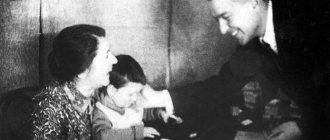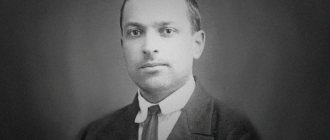Parents, while working with their child, without noticing it themselves, use the phenomenon of the zone of proximal development (ZPD). Every child is unique. The self-development of a preschooler is subjective and occurs at different speeds and degrees of productivity.
The leading role influencing the formation of the child’s psyche and the acquisition of educational experience by adults is played by the help of adults. Often parents and teachers incorrectly set tasks for their children. Incorrectly set tasks, due to their simplicity, do not allow the child to advance in self-development, or even remain beyond the child’s understanding.
For the further successful development of the baby, it is important to correctly identify the zones of current and immediate development.
Practical use
Children learn about the world through observation, imitation, and appropriation of experience. This process is associated with the interaction of children with the adults and peers around them, communication with them, and joint activities. Moreover, communication and interaction play a significant role. A person’s learning occurs more successfully and efficiently in society, in interaction with people around him.
When a child gets acquainted with new concepts, emotions, and social roles, he knows nothing about them. It follows from this that everything new in a child’s life prevails over existing knowledge, skills and capabilities. A child cannot overcome this path from the familiar to the unfamiliar, from the familiar to the unknown alone.
The comparison of zones of actual and proximal development is similar to the process of formation of higher mental functions, which also depend on interaction with others. Primarily, they represent something external to a person, but subsequently they flow to the level of processes, and a person uses them as if these properties were innate. Initially, the mental process belongs to the zone of proximal development, but later it moves into the zone of actual self-development.
The concept of “zone of proximal development” was introduced by the Soviet psychologist and teacher Lev Semenovich Vygotsky in the early 1930s. In the book “Thinking and Speech” he talks about
In other words, it is considered the norm when a child’s mental processes always go one step behind the knowledge they receive. The distance between the zones of actual and proximal development is important, which affects the development of a preschooler. Without it, mental processes that are undergoing the formation stage can easily remain in a state of untapped internal potential.
Is language competence important?
Children's acquisition of social skills, new knowledge and their mental development are unlikely to be possible without language competence. This means the development of children’s speech, an increase in vocabulary, a change and complication of the language structure. Vygotsky believed that timely speech development directly affects the child’s psyche and encourages the child to learn.
Linguistic competence is a psychological system that is a combination of speech experience gained through communication and knowledge acquired in the learning process.
The main components of this system are:
- indicative - contains an analysis of the features of speech material that children intuitively rely on;
- operational – includes the totality and sequence of language skills used by children;
- emotional-volitional – takes into account various aspects of speech experience.
Vygotsky believed that speech development is extremely important. Without this process, the ZBR, like the ZAR, cannot be formed. Accordingly, the processes of development and learning do not begin.
Zone of actual development – ability to work independently
According to the theory of L.S. Vygotsky, the development of a child has a two-way direction. The child has already acquired some knowledge. Based on them, ask the preschooler to complete a new assignment, and the child will complete it independently.
The zone of actual development is the totality of knowledge and skills that currently exist. Simply put, everything that a preschooler can successfully cope with on his own, without help from adults. This definition was first introduced by the researcher himself, and it is still relevant today.
The main principles of the actual development zone:
- successful assimilation by the child of the information received;
- the child’s ability to complete tasks within the framework of current self-development without the participation of adults;
- independent solution of assigned tasks.
The baby is familiar with basic geometric shapes and colors. He will easily point to a green cube or a yellow ball. At the request of an adult to put blue balls in one basket and white balls in another, the child can easily complete the task without outside help. If the baby only knows the colors and is completely unfamiliar with the shape, the basket will contain blue balls, cubes, and cones. Until knowledge of geometric figures is in the zone of actual development, the preschooler is not able to cope with the task without outside help. In the future, the task can be complicated. You need to ask the child to put red and green objects in the basket, and put cones and rings in the corner.
At first, such classes will help consolidate acquired knowledge, but nothing more. Over time, the baby will get bored with the monotony of the tasks assigned and he will have a desire to improve his skills and learn new things. For further development, it is advisable to move on to the next stage, where the help of a mentor will again be needed.
Features of interaction with society
The term “more knowledgeable other” does not always mean a teacher or mentor. By contacting peers or slightly older children, kids learn experience and knowledge.
For teenagers, peer influence also plays a big role in development. During this period, boys and girls often turn to peers if they want to understand issues that they are uncomfortable discussing with their parents or in which they consider their peers to be more competent.
According to Vygotsky, new knowledge is perceived more easily and absorbed better if children have the opportunity to interact with peers. To master new skills, the scientist proposed forming groups of students, which include participants with a high level of knowledge and less competent ones.
The zone of proximal development as presented by L.S. Vygotsky
Following the successful assimilation of the material covered, the knowledge acquired by the preschooler moves to the current level of self-development. Thanks to this, the baby has opportunities to express imagination, creativity, and solve various problems. However, children's development is still limited by the barrier. For subsequent advancement, the baby needs new knowledge. The ability to assimilate new, but interconnected with acquired knowledge, material is an indicator of the hidden potential of a preschooler. L.S. Vygotsky established that the zone of proximal development (ZPD) is the knowledge, skills, and abilities acquired by a child with the help of adults.
The phenomenon of the zone of proximal development is the readiness of the brain for a certain activity. However, it is not possible to achieve results without outside help.
The identification of two zones in the development of a preschooler according to Vygotsky was akin to a revolution in pedagogical science. Initially, to identify the level of learning ability, only those skills that the child had already mastered were taken into account, that is, the zone of actual development. This diagnosis was not complete. For a complete picture, it was necessary to determine further prospects. The theory put forward back in the 20th century has not lost its relevance to the present day.
How the scientist himself determined the ZBR
The ZPD, or zone of proximal development, is defined by Vygotsky as a constructive theory. With its help, it is possible to characterize the relationship between the psychological characteristics of child development and learning processes.
The scientist himself described this concept very poetically, but very vaguely. In the scientific work “Dynamics of mental development of a schoolchild in connection with learning,” the zone of proximal development is defined by Vygotsky as follows: “Functions that have not yet matured, but are in this process. Those who are in their infancy will mature tomorrow. They are not fruits, but buds and flowers of development, that is, that which is capable of ripening.”
Lev Semenovich is characterized by abstract digressions and detached examples when explaining his own thoughts, which he sets out in scientific works. This scientist avoided language devoid of epithets. He believed that such a presentation simplifies understanding. This is how the zone of proximal development is defined by Vygotsky.
This manner contributed to the emergence of a mass of discrepancies and misunderstandings, which in our time has led to criticism and even denial of the work of this scientist.
Positions of communication
From what was stated earlier, it follows that a preschooler at different stages of growing up is able to independently cope with some actions - this characterizes the zone of his actual self-development. However, much remains beyond the baby’s capabilities. This is an indicator of its zone of proximal development.
Each child requires a subjective approach: one needs a small hint, while another needs more meaningful help. These examples are evidence of the existence of zones of proximal development of different sizes. There are 5 positions of communication:
- Independent position - the mentor slightly assists the preschooler or begins the action, and the child continues and finishes.
- Position “on an equal footing” – the mentor interacts simultaneously with the child, without being paired with him. The main goal of this position is competition.
- Position “from below” - the mentor assists the preschooler through leading questions, tips, and stimulates activity with conscious mistakes.
- Position “from above” - the adult acts as a teacher, explains the material, indicates the methods and progress of solving the task.
- The “we” position—the mentor and the preschooler perform the task together.
Some children need a hint, others need to devote much more time and complete all tasks together. The less support provided by elders, the broader the child’s ZPD. If the child is unable to cope with the assigned tasks even with the direct help of an adult, the point is that the material presented at this stage is outside the zone of proximal development, and it is better to postpone its development.
Brief biography of Vygotsky
Lev Semenovich was born in 1896 in the town of Orsha, located in the Mogilev province. The future scientist grew up in Gomel, where the family moved shortly after his birth. He became the second child in a very large family. In total, his parents had eight children.
Initially, the scientist’s surname was “Vigotsky”. He changed it in 1923. Perhaps Lev Semenovich was ashamed of his Jewish origin, but it is likely that the reason was difficulties in pronunciation. There is also a widespread version that the change of name was due to the scientist’s desire to differ from his own uncle, a famous literary critic at that time.
His father was a merchant. Simkha Leibovich Vigotsky studied commerce at the Kharkov Commercial School. He successfully combined his trading activities with work as deputy manager of a branch of the United Bank. The future scientist’s mother worked as a teacher. Her name was Cecilia Moiseevna.
Vygotsky's parents were not poor people, and their children did not need anything. The children's primary education was provided by private teachers who came to their homes. Lev Semenovich entered the gymnasium immediately into the sixth grade, passing exams for the first five, which he did not attend.
In 1913, Vygotsky became a student at the Faculty of Medicine at Moscow University. However, he became interested in law and soon transferred to another faculty. As a student, he wrote many articles on literary and historical topics. Various magazines readily published them. In 1917, Lev Semenovich left Moscow University. He completed his education at Shanyavsky University at the Faculty of History and Philosophy.
In 1919, the future scientist was diagnosed with tuberculosis. He left Moscow, returning to his family in Gomel. Until 1922, he worked as a literature teacher at a labor school. He worked part-time at technical schools and at various evening courses, and actively participated in the training and retraining of teachers and workers in children's institutions.
The year 1922 became a turning point in the life of the future scientist. He got a job teaching at the Gomel Pedagogical College. A year later, Lev Semenovich began organizing a psychological laboratory at the same educational institution. In the summer of 1923, he led a group of students from the Moscow Institute who carried out a series of experiments in a laboratory office at a technical school in Gomel.
Lev Semenovich presented the results of these “experiments of youth” in the form of a scientific report at a congress on psychoneurology in Petrograd. At the same time, he met Alexander Romanovich Luria, who contributed to Vygotsky’s transfer to the Institute of Experimental Psychology, located in Moscow.
The scientist died in June 1934. His body was cremated, and the urn with his ashes was buried at the Novodevichy cemetery.
Using the theory of development zones
Theory of the zone of proximal development L.S. From a practical point of view, Vygotsky is characterized as follows: actions performed by a child with the help of an adult are the key to his growing up in the near future. And the wider the range of joint work, the greater the likelihood of revealing the baby’s natural potential.
Such a symbiosis affects all areas of the child’s self-development. Parents, when choosing games and tasks, should be based on the interests and preferences of their child and adjust the level of difficulty of the material provided. They should build their line of behavior not from the position of a strict mentor, but from the position of an assistant, an employee. Jokes, games, and positive emotions are acceptable and even obligatory.
Let's look at an example. The child has learned the alphabet and easily finds any letter in the text, but he is unable to read even the shortest word. It's time for the next stage in learning. Initially, you need to take a simple word consisting of several letters. The lesson should be in a playful way and be interesting to the child, otherwise after a while he will forget the material he has learned. Gradually you need to increase the level of difficulty of the task. Subsequently, the child will be able to compose words from syllables and read them. In the future, you can offer to read small sentences.
Recommendations
A few helpful tips will help parents make the most of the concept of “zone of proximal development.”
- Determine the current width of the child's zone of proximal development. To do this, use different communication positions in similar situations and draw a conclusion which one works better. It is also useful to observe your child when he learns something spontaneously.
- Try to gradually increase the zone of proximal development until knowledge and skills move into the zone of actual development. Let's say a schoolchild does not know how to solve problems in three steps. Start by building a team with him. If you have completed the task as a team, explain the next task from the teacher’s perspective. Then limit yourself to hints and leading questions. Continue to expand the area until the child can solve this type of problem on his own.
- There is an almost fail-safe technique that helps even in the most difficult cases. The child must be placed in the space between two adults, one of whom is in the “we” position (team), and the second in the teacher position (“on top”). Thus, the first will help the child “from the inside,” overcoming difficulties with him, and the second will create conditions for changing the boundaries of the zone of proximal development. This technique requires a lot of time and effort on the part of parents, but it is extremely effective.
- Remember that no techniques or techniques will work if the adult himself is not interested in communicating with the child. Communication based on genuine cooperation, rather than condescension towards the child, is the key to successful learning. Only in such communication, such joint activity, the child develops quickly and correctly.
- Anyone, even a peer, can act as a teacher helping to master a new space. The main thing is that he knows a little more than the child himself and willingly cooperates with him. In general, the wider the child’s circle of contacts with more knowledgeable people, the better for his development.
- You can’t ignore the child’s current developmental needs, but you shouldn’t force them either. Both extremes can lead to personality deformations and even mental disorders. Everything is good in due time. Learning is most effective when it occurs within the period determined by the zone of proximal development (Vygotsky called this the “optimal period of learning” and Montessori the “sensitive period of development”).
- Some parents fear that in a situation of constant adult help, the child will become dependent and unable to overcome difficulties alone. This is not true, just as the approach to children as “little adults” who “know what they need” and “are able to choose the best for themselves” is incorrect. Children need the help of adults, communication with them, and joint activities. Without this, they will lag behind in development. To foster independence, simply do not do for children what is within their zone of actual development.
- The pace of development of each child is individual. You shouldn’t get hung up on the time it takes to perceive and process new knowledge. It is better to measure depth of perception rather than speed.
Some people, especially those who study a lot, are familiar with the “feeling of resistance of the material.” New knowledge, previously unfamiliar concepts, definitions, terms at first glance seem incomprehensible, illogical, and do not want to remain in memory. But as you dive into the material and make efforts to master it, at some point everything falls into place. Looking back, a person wonders why something was incomprehensible before - the “resistance of the material” has been overcome!
A child experiences the same thing when he learns, only it is much more difficult for him to cope with the “resistance of the material” than for an adult (and sometimes even impossible). He lacks the “ability to learn”; his psyche, his personality are not yet fully formed. Who else but parents are called upon to help their child overcome this resistance!
What from the theory of L.S. Vygotsky will be useful when teaching children
When conducting classes, it is worth considering both zones of development. It is advisable to take an interest in the program used in preschool educational institutions and, based on it, build your classes. You need to start the lesson by reviewing the material covered. You should not scold or rush your child if he has difficulties completing a task. Memorization often occurs unevenly: at first the child cannot understand the proposed material for a long time, then there is a sudden breakthrough. Training should take place at an appropriate rhythm.
Praise is important when working with children: show your child how proud you are of his success. Mental activity needs training. A preschooler needs to be motivated to develop new skills. Otherwise, his self-development will stop within the limits of the actual. However, you should not raise the bar by offering more complex tasks, as this can provoke nervous disorders and mental illness. There is a risk that the child will lose interest in acquiring new knowledge and the learning process itself.
How the learning process is structured
Vygotsky believed that a teacher should be able to balance between ZPD and ZAP, alternating simple tasks with more complex ones, the solution of which requires little help, as well as with very complex ones that require new knowledge.
The teacher determines the following ZPD criteria:
- zone boundaries;
- problematic epicenter.
When presented with a ready-made solution, children do not learn anything, do not acquire new knowledge and do not realize the mistakes they have made. They do not accumulate experience and do not develop the ability to overcome difficulties.
Useful tips for parents
The following recommendations will help you influence changes in your child's zone of proximal development.
- Determine the level of formation and size of the child’s zone of proximal development.
- Expand the zone of proximal development until the acquired skills and knowledge move into the zone of actual development.
- Be interested in the process of communication with your baby.
- Even another child can act as a teacher, provided that the teacher’s knowledge exceeds the student’s level of knowledge.
- It should be remembered that the effect of training is maximum if it coincides with the zone of proximal development.
- To develop independence in children, you should not help them perform those actions that are included in their zone of actual development.
- Each child develops at his own pace. Do not compare children with their peers, try to focus on the quality of the knowledge acquired.
How the relationship between teacher and child is built
In Vygotsky's framework, teachers and children are partners. Their relationship is considered equal. The constructive theory of ZPD denies the dominance of teachers over children.
Teachers and children (from Vygotsky’s point of view) are equal participants in the development process, subjects of educational activity who are unable to exist separately. Of course, this does not mean that familiarity is possible between teachers and students. ZPD implies an approach to organizing the development process in which the child begins to strive for self-learning.
Development of fine motor skills
This is another important aspect for personality development, like strengthening the body or learning to read. Fine motor skills have a very beneficial effect on the activation of mental activity. This can be drawing on paper or sand, modeling, creating appliqués, playing with small objects and much more.
If kids have recently studied pets in kindergarten, then it is better to ask the child to draw or mold the representative they like from plasticine. You should not give a specific task (to depict, for example, a dog). This will limit the child's imagination and delay progress.
The zone of actual development is targeted actions based on existing skills. If they are used constructively, they can very effectively expand the boundaries of a child’s knowledge.
Repetition is the mother of learning
In order for training to give maximum results, the baby’s development must proceed systematically. The lesson must be related to the previous lesson, otherwise the effectiveness will be low. Let's say the children have learned the letter "a". At the next lesson, it would be advisable to first repeat the material covered and only then move on.
The area of proximal development and the zone of actual development are different concepts, but they should still always be in a harmonious relationship. New knowledge is often just a supplement to old knowledge, and therefore expands known information. Repetition of previously studied material will form a more complete view of a particular subject.
Vygotsky believed that focusing on an existing achievement will help develop a new skill. Therefore, activities for a child should be cumulative.











